Junbo Wang
Foundation Model for Skeleton-Based Human Action Understanding
Aug 18, 2025Abstract:Human action understanding serves as a foundational pillar in the field of intelligent motion perception. Skeletons serve as a modality- and device-agnostic representation for human modeling, and skeleton-based action understanding has potential applications in humanoid robot control and interaction. \RED{However, existing works often lack the scalability and generalization required to handle diverse action understanding tasks. There is no skeleton foundation model that can be adapted to a wide range of action understanding tasks}. This paper presents a Unified Skeleton-based Dense Representation Learning (USDRL) framework, which serves as a foundational model for skeleton-based human action understanding. USDRL consists of a Transformer-based Dense Spatio-Temporal Encoder (DSTE), Multi-Grained Feature Decorrelation (MG-FD), and Multi-Perspective Consistency Training (MPCT). The DSTE module adopts two parallel streams to learn temporal dynamic and spatial structure features. The MG-FD module collaboratively performs feature decorrelation across temporal, spatial, and instance domains to reduce dimensional redundancy and enhance information extraction. The MPCT module employs both multi-view and multi-modal self-supervised consistency training. The former enhances the learning of high-level semantics and mitigates the impact of low-level discrepancies, while the latter effectively facilitates the learning of informative multimodal features. We perform extensive experiments on 25 benchmarks across across 9 skeleton-based action understanding tasks, covering coarse prediction, dense prediction, and transferred prediction. Our approach significantly outperforms the current state-of-the-art methods. We hope that this work would broaden the scope of research in skeleton-based action understanding and encourage more attention to dense prediction tasks.
Iterative pseudo-labeling based adaptive copy-paste supervision for semi-supervised tumor segmentation
Aug 06, 2025Abstract:Semi-supervised learning (SSL) has attracted considerable attention in medical image processing. The latest SSL methods use a combination of consistency regularization and pseudo-labeling to achieve remarkable success. However, most existing SSL studies focus on segmenting large organs, neglecting the challenging scenarios where there are numerous tumors or tumors of small volume. Furthermore, the extensive capabilities of data augmentation strategies, particularly in the context of both labeled and unlabeled data, have yet to be thoroughly investigated. To tackle these challenges, we introduce a straightforward yet effective approach, termed iterative pseudo-labeling based adaptive copy-paste supervision (IPA-CP), for tumor segmentation in CT scans. IPA-CP incorporates a two-way uncertainty based adaptive augmentation mechanism, aiming to inject tumor uncertainties present in the mean teacher architecture into adaptive augmentation. Additionally, IPA-CP employs an iterative pseudo-label transition strategy to generate more robust and informative pseudo labels for the unlabeled samples. Extensive experiments on both in-house and public datasets show that our framework outperforms state-of-the-art SSL methods in medical image segmentation. Ablation study results demonstrate the effectiveness of our technical contributions.
SounDiT: Geo-Contextual Soundscape-to-Landscape Generation
May 19, 2025Abstract:We present a novel and practically significant problem-Geo-Contextual Soundscape-to-Landscape (GeoS2L) generation-which aims to synthesize geographically realistic landscape images from environmental soundscapes. Prior audio-to-image generation methods typically rely on general-purpose datasets and overlook geographic and environmental contexts, resulting in unrealistic images that are misaligned with real-world environmental settings. To address this limitation, we introduce a novel geo-contextual computational framework that explicitly integrates geographic knowledge into multimodal generative modeling. We construct two large-scale geo-contextual multimodal datasets, SoundingSVI and SonicUrban, pairing diverse soundscapes with real-world landscape images. We propose SounDiT, a novel Diffusion Transformer (DiT)-based model that incorporates geo-contextual scene conditioning to synthesize geographically coherent landscape images. Furthermore, we propose a practically-informed geo-contextual evaluation framework, the Place Similarity Score (PSS), across element-, scene-, and human perception-levels to measure consistency between input soundscapes and generated landscape images. Extensive experiments demonstrate that SounDiT outperforms existing baselines in both visual fidelity and geographic settings. Our work not only establishes foundational benchmarks for GeoS2L generation but also highlights the importance of incorporating geographic domain knowledge in advancing multimodal generative models, opening new directions at the intersection of generative AI, geography, urban planning, and environmental sciences.
ForceMimic: Force-Centric Imitation Learning with Force-Motion Capture System for Contact-Rich Manipulation
Oct 11, 2024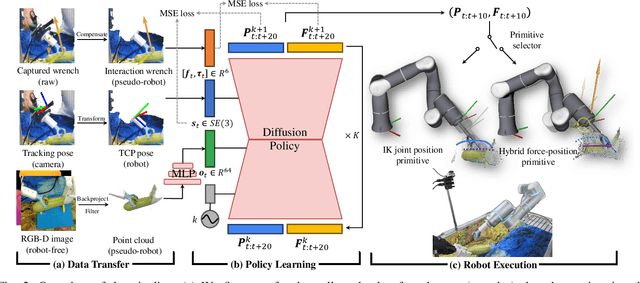
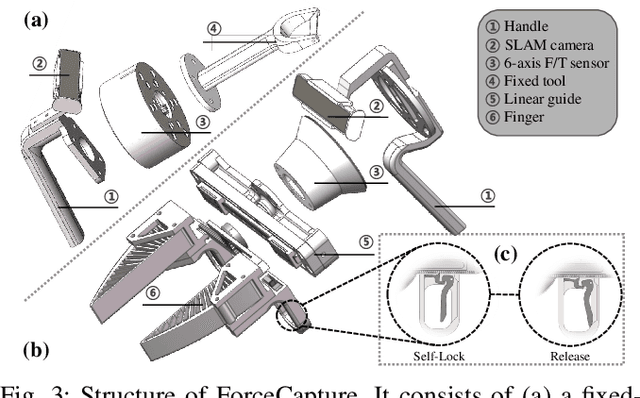
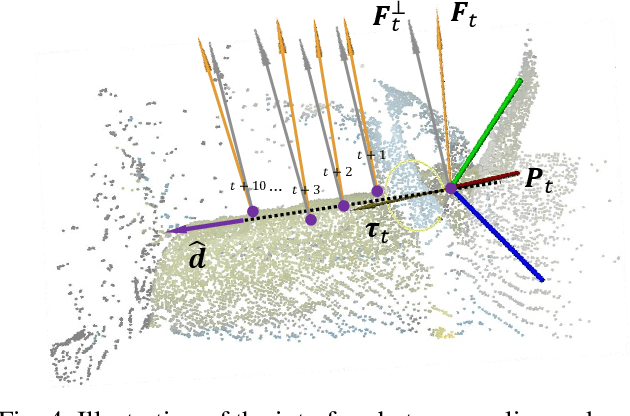
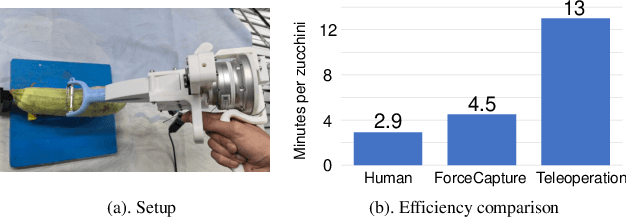
Abstract:In most contact-rich manipulation tasks, humans apply time-varying forces to the target object, compensating for inaccuracies in the vision-guided hand trajectory. However, current robot learning algorithms primarily focus on trajectory-based policy, with limited attention given to learning force-related skills. To address this limitation, we introduce ForceMimic, a force-centric robot learning system, providing a natural, force-aware and robot-free robotic demonstration collection system, along with a hybrid force-motion imitation learning algorithm for robust contact-rich manipulation. Using the proposed ForceCapture system, an operator can peel a zucchini in 5 minutes, while force-feedback teleoperation takes over 13 minutes and struggles with task completion. With the collected data, we propose HybridIL to train a force-centric imitation learning model, equipped with hybrid force-position control primitive to fit the predicted wrench-position parameters during robot execution. Experiments demonstrate that our approach enables the model to learn a more robust policy under the contact-rich task of vegetable peeling, increasing the success rates by 54.5% relatively compared to state-of-the-art pure-vision-based imitation learning. Hardware, code, data and more results would be open-sourced on the project website at https://forcemimic.github.io.
Force-Centric Imitation Learning with Force-Motion Capture System for Contact-Rich Manipulation
Oct 10, 2024



Abstract:In most contact-rich manipulation tasks, humans apply time-varying forces to the target object, compensating for inaccuracies in the vision-guided hand trajectory. However, current robot learning algorithms primarily focus on trajectory-based policy, with limited attention given to learning force-related skills. To address this limitation, we introduce ForceMimic, a force-centric robot learning system, providing a natural, force-aware and robot-free robotic demonstration collection system, along with a hybrid force-motion imitation learning algorithm for robust contact-rich manipulation. Using the proposed ForceCapture system, an operator can peel a zucchini in 5 minutes, while force-feedback teleoperation takes over 13 minutes and struggles with task completion. With the collected data, we propose HybridIL to train a force-centric imitation learning model, equipped with hybrid force-position control primitive to fit the predicted wrench-position parameters during robot execution. Experiments demonstrate that our approach enables the model to learn a more robust policy under the contact-rich task of vegetable peeling, increasing the success rates by 54.5% relatively compared to state-of-the-art pure-vision-based imitation learning. Hardware, code, data and more results would be open-sourced on the project website at https://forcemimic.github.io.
UniAff: A Unified Representation of Affordances for Tool Usage and Articulation with Vision-Language Models
Sep 30, 2024



Abstract:Previous studies on robotic manipulation are based on a limited understanding of the underlying 3D motion constraints and affordances. To address these challenges, we propose a comprehensive paradigm, termed UniAff, that integrates 3D object-centric manipulation and task understanding in a unified formulation. Specifically, we constructed a dataset labeled with manipulation-related key attributes, comprising 900 articulated objects from 19 categories and 600 tools from 12 categories. Furthermore, we leverage MLLMs to infer object-centric representations for manipulation tasks, including affordance recognition and reasoning about 3D motion constraints. Comprehensive experiments in both simulation and real-world settings indicate that UniAff significantly improves the generalization of robotic manipulation for tools and articulated objects. We hope that UniAff will serve as a general baseline for unified robotic manipulation tasks in the future. Images, videos, dataset, and code are published on the project website at:https://sites.google.com/view/uni-aff/home
Efficient Model Compression for Hierarchical Federated Learning
May 27, 2024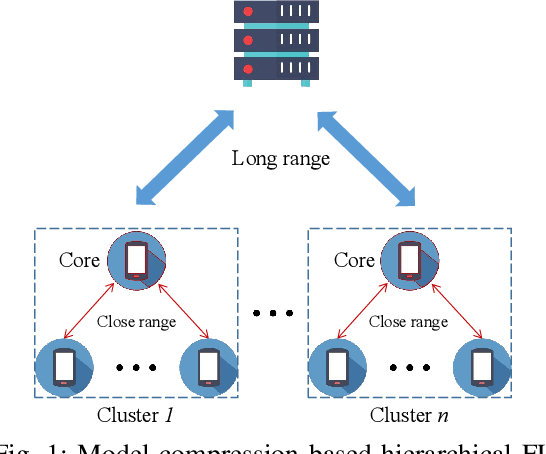
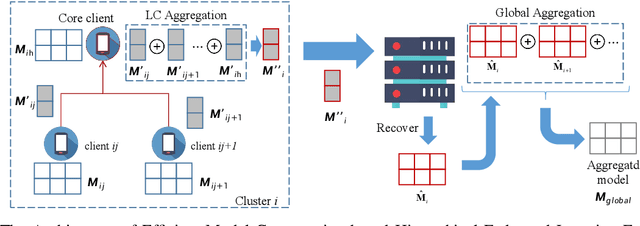
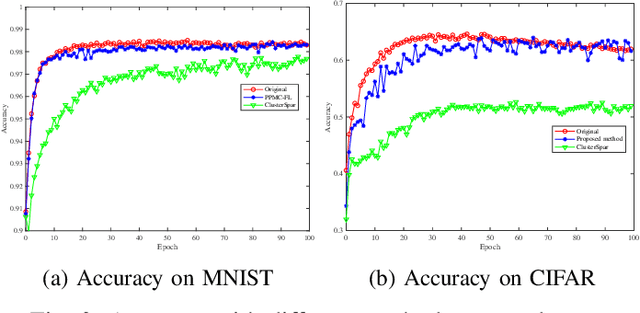
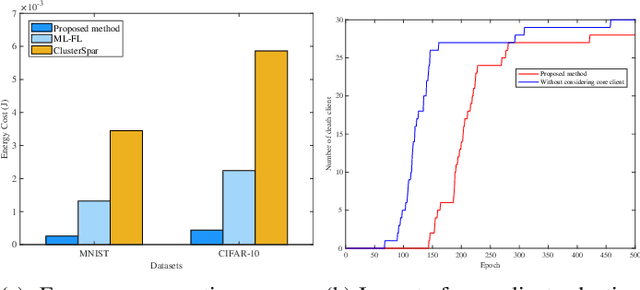
Abstract:Federated learning (FL), as an emerging collaborative learning paradigm, has garnered significant attention due to its capacity to preserve privacy within distributed learning systems. In these systems, clients collaboratively train a unified neural network model using their local datasets and share model parameters rather than raw data, enhancing privacy. Predominantly, FL systems are designed for mobile and edge computing environments where training typically occurs over wireless networks. Consequently, as model sizes increase, the conventional FL frameworks increasingly consume substantial communication resources. To address this challenge and improve communication efficiency, this paper introduces a novel hierarchical FL framework that integrates the benefits of clustered FL and model compression. We present an adaptive clustering algorithm that identifies a core client and dynamically organizes clients into clusters. Furthermore, to enhance transmission efficiency, each core client implements a local aggregation with compression (LC aggregation) algorithm after collecting compressed models from other clients within the same cluster. Simulation results affirm that our proposed algorithms not only maintain comparable predictive accuracy but also significantly reduce energy consumption relative to existing FL mechanisms.
RPMArt: Towards Robust Perception and Manipulation for Articulated Objects
Mar 24, 2024



Abstract:Articulated objects are commonly found in daily life. It is essential that robots can exhibit robust perception and manipulation skills for articulated objects in real-world robotic applications. However, existing methods for articulated objects insufficiently address noise in point clouds and struggle to bridge the gap between simulation and reality, thus limiting the practical deployment in real-world scenarios. To tackle these challenges, we propose a framework towards Robust Perception and Manipulation for Articulated Objects (RPMArt), which learns to estimate the articulation parameters and manipulate the articulation part from the noisy point cloud. Our primary contribution is a Robust Articulation Network (RoArtNet) that is able to predict both joint parameters and affordable points robustly by local feature learning and point tuple voting. Moreover, we introduce an articulation-aware classification scheme to enhance its ability for sim-to-real transfer. Finally, with the estimated affordable point and articulation joint constraint, the robot can generate robust actions to manipulate articulated objects. After learning only from synthetic data, RPMArt is able to transfer zero-shot to real-world articulated objects. Experimental results confirm our approach's effectiveness, with our framework achieving state-of-the-art performance in both noise-added simulation and real-world environments. The code and data will be open-sourced for reproduction. More results are published on the project website at https://r-pmart.github.io .
ManiPose: A Comprehensive Benchmark for Pose-aware Object Manipulation in Robotics
Mar 20, 2024Abstract:Robotic manipulation in everyday scenarios, especially in unstructured environments, requires skills in pose-aware object manipulation (POM), which adapts robots' grasping and handling according to an object's 6D pose. Recognizing an object's position and orientation is crucial for effective manipulation. For example, if a mug is lying on its side, it's more effective to grasp it by the rim rather than the handle. Despite its importance, research in POM skills remains limited, because learning manipulation skills requires pose-varying simulation environments and datasets. This paper introduces ManiPose, a pioneering benchmark designed to advance the study of pose-varying manipulation tasks. ManiPose encompasses: 1) Simulation environments for POM feature tasks ranging from 6D pose-specific pick-and-place of single objects to cluttered scenes, further including interactions with articulated objects. 2) A comprehensive dataset featuring geometrically consistent and manipulation-oriented 6D pose labels for 2936 real-world scanned rigid objects and 100 articulated objects across 59 categories. 3) A baseline for POM, leveraging the inferencing abilities of LLM (e.g., ChatGPT) to analyze the relationship between 6D pose and task-specific requirements, offers enhanced pose-aware grasp prediction and motion planning capabilities. Our benchmark demonstrates notable advancements in pose estimation, pose-aware manipulation, and real-robot skill transfer, setting new standards for POM research. We will open-source the ManiPose benchmark with the final version paper, inviting the community to engage with our resources, available at our website:https://sites.google.com/view/manipose.
Spatial-Temporal Hypergraph Neural Network for Traffic Forecasting
Oct 24, 2023Abstract:Traffic forecasting, which benefits from mobile Internet development and position technologies, plays a critical role in Intelligent Transportation Systems. It helps to implement rich and varied transportation applications and bring convenient transportation services to people based on collected traffic data. Most existing methods usually leverage graph-based deep learning networks to model the complex road network for traffic forecasting shallowly. Despite their effectiveness, these methods are generally limited in fully capturing high-order spatial dependencies caused by road network topology and high-order temporal dependencies caused by traffic dynamics. To tackle the above issues, we focus on the essence of traffic system and propose STHODE: Spatio-Temporal Hypergraph Neural Ordinary Differential Equation Network, which combines road network topology and traffic dynamics to capture high-order spatio-temporal dependencies in traffic data. Technically, STHODE consists of a spatial module and a temporal module. On the one hand, we construct a spatial hypergraph and leverage an adaptive MixHop hypergraph ODE network to capture high-order spatial dependencies. On the other hand, we utilize a temporal hypergraph and employ a hyperedge evolving ODE network to capture high-order temporal dependencies. Finally, we aggregate the outputs of stacked STHODE layers to mutually enhance the prediction performance. Extensive experiments conducted on four real-world traffic datasets demonstrate the superior performance of our proposed model compared to various baselines.
 Add to Chrome
Add to Chrome Add to Firefox
Add to Firefox Add to Edge
Add to Edge